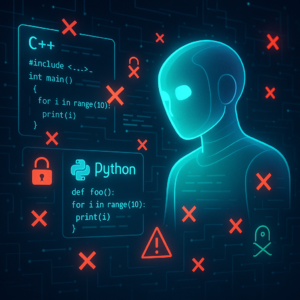Meet RITA: Your New Best Friend for Designing Resilient IoT Systems

Meet RITA: Your New Best Friend for Designing Resilient IoT Systems
Imagine building a smart city, where everything—from lighting and transportation to waste management—is interconnected. In such a complex web of devices, services, and resources, ensuring that your system remains operational and secure despite external disturbances is crucial. Enter RITA, a groundbreaking framework designed to help engineers and developers automatically create resilient Internet of Things (IoT) systems. But what makes RITA stand out? Let’s dive in!
Why Do We Need Resilient IoT Systems?
The Internet of Things is revolutionizing the way we interact with the world. From smart homes to large-scale industrial systems, IoT is becoming a central player. However, greater connectivity means more potential points for failure or attack. You wouldn’t want your smart home to be compromised by a hacker, or your city’s traffic system to fail during rush hour, right?
Creating systems that can bounce back from threats or failures—what the tech world calls ‘resilience’—is crucial. Traditionally, designing these resilient systems involved a lot of manual work, making the process lengthy and prone to error. RITA is here to change that.
Breaking Down the RITA Framework
Let’s unpack what RITA is all about without getting too tangled up in technical jargon.
1. Identifying Critical Components
Think of your IoT system as a band. Just like each musician plays an essential role in creating a great performance, each element in an IoT system is crucial for its proper functioning. RITA uses a fine-tuned version of RoBERTa—a powerful AI model famous in language processing circles—to automatically pinpoint these key components from design documents. This model acts like a seasoned music producer, effortlessly identifying the band members (or in this case, IoT Critical Objects like sensors or network resources) that are integral to the system’s melody.
2. Understanding the Risks
Once you’ve identified your band’s lineup, the next step is to anticipate the problems that might disrupt the harmony. Just like a musician might worry about a broken guitar string or a sudden power cut, IoT systems face risks like cyberattacks or technical malfunctions. RITA connects the dots between potential threats and the critical components at risk, making it easier for developers to prepare for and counteract these issues.
3. The Savior Strategies
Finally, just like a concert has backup plans in case things go awry (extra guitar picks or a generator), IoT systems need strategies to safeguard against threats. RITA recommends robust ‘mitigation strategies,’ leveraging a vast database of potential threats and countermeasures. These can include encryption, anomaly detection, or even basic physical safeguards.
Why RITA Over Other Tools?
If you’re wondering why you’d opt for RITA instead of some generic AI chatbot like ChatGPT, here’s why: RITA works offline, so your data stays safe and sound. It also offers more consistent outputs than chatbots, ensuring that you’re not left scratching your head with contradictory advice. Moreover, RITA kicks the competition in the shin by outperforming ChatGPT in identifying core IoT components across multiple key areas, such as sensors and network resources.
Real-World Implications and Uses
So, what does all this mean in the grand scheme of things? With RITA, IoT developers can design robust systems capable of handling real-world hiccups without missing a beat. Whether it’s creating an unhackable smart home setup or ensuring that autonomous vehicles communicate flawlessly, RITA serves as a reliable ally in IoT development.
Future Directions: RITA on the Rise
Although RITA is already impressive, the researchers are looking to further refine the framework. They plan to expand RITA’s scope to handle even more complex IoT settings and improve its aptitude in areas where it currently performs less optimally, like smart cameras and tags.
Key Takeaways
- RITA is a game-changer for designing robust IoT systems by automating key identification and threat mitigation tasks.
- Unlike traditional chatbots, RITA offers consistency, privacy, and offline functionality—critical for sensitive IoT environments.
- RITA outperforms ChatGPT in four out of seven key IoT categories, including sensors and network resources.
- The framework is open-source and available on GitHub for those keen on giving it a spin in their IoT projects.
By helping developers and engineers create resilient IoT applications, RITA takes us one step closer to a future where our interconnected world runs smoothly and securely. So, whether you’re an IoT enthusiast or a developer seeking the next big thing in tech tools, keep an eye on RITA—it might just transform how we build the smart systems of tomorrow!
If you are looking to improve your prompting skills and haven’t already, check out our free Advanced Prompt Engineering course.
This blog post is based on the research article “RITA: Automatic Framework for Designing of Resilient IoT Applications” by Authors: Luis Eduardo Pessoa, Cristovao Freitas Iglesias Jr, Claudio Miceli. You can find the original article here.




